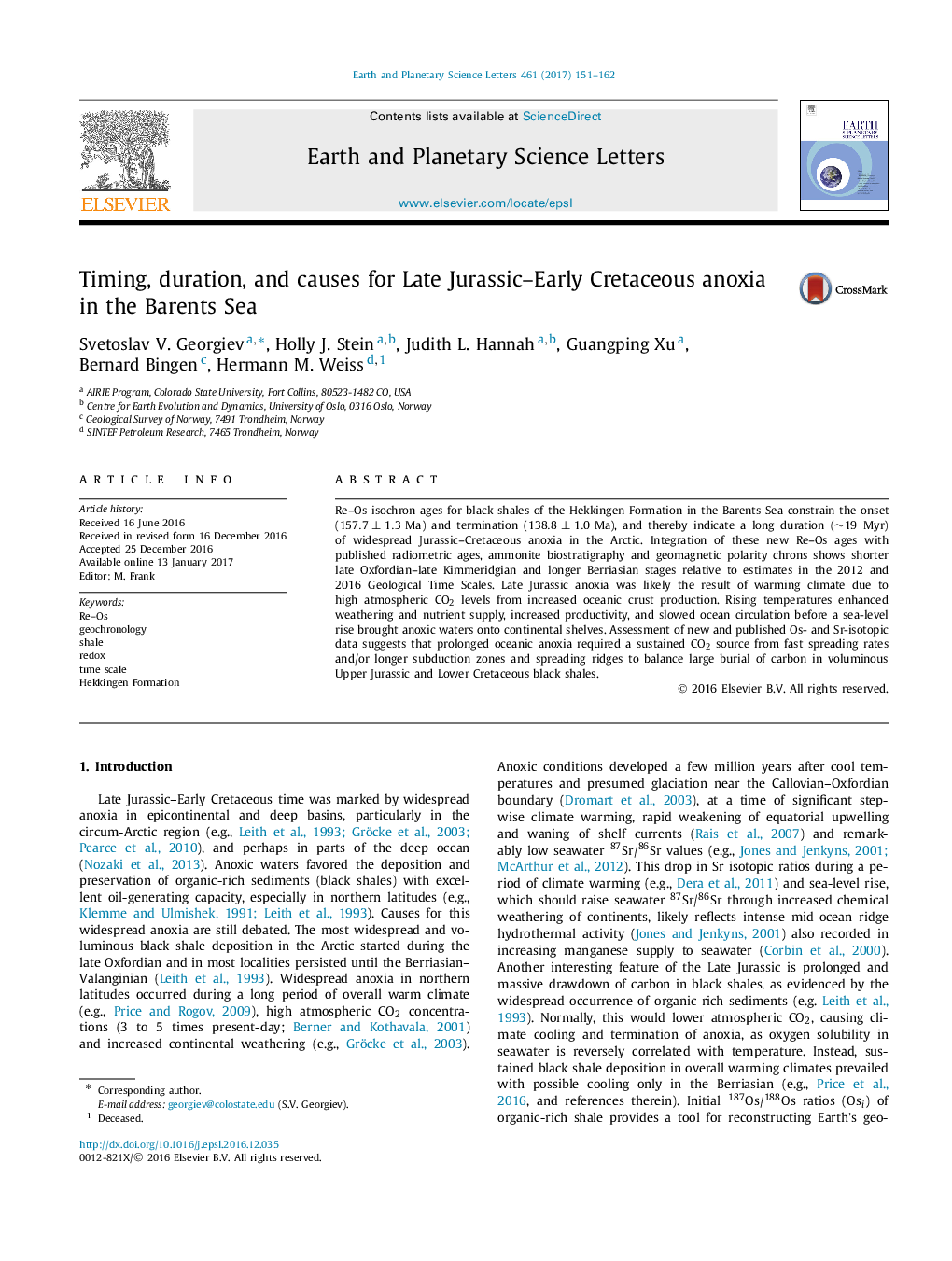| Article ID | Journal | Published Year | Pages | File Type |
|---|---|---|---|---|
| 5779806 | Earth and Planetary Science Letters | 2017 | 12 Pages |
â¢Hekkingen Formation shales were deposited in â¼19 Myr, from â¼157.7 Ma to â¼138.8 Ma.â¢Re-Os ages constrain the onset and duration of regional anoxia.â¢Radiometric ages refine the Jurassic time scale.â¢Late Jurassic anoxia is likely related to warm climate.â¢The long duration of anoxia required a sustained CO2 source.
Re-Os isochron ages for black shales of the Hekkingen Formation in the Barents Sea constrain the onset (157.7±1.3 Ma) and termination (138.8±1.0 Ma), and thereby indicate a long duration (â¼19 Myr) of widespread Jurassic-Cretaceous anoxia in the Arctic. Integration of these new Re-Os ages with published radiometric ages, ammonite biostratigraphy and geomagnetic polarity chrons shows shorter late Oxfordian-late Kimmeridgian and longer Berriasian stages relative to estimates in the 2012 and 2016 Geological Time Scales. Late Jurassic anoxia was likely the result of warming climate due to high atmospheric CO2 levels from increased oceanic crust production. Rising temperatures enhanced weathering and nutrient supply, increased productivity, and slowed ocean circulation before a sea-level rise brought anoxic waters onto continental shelves. Assessment of new and published Os- and Sr-isotopic data suggests that prolonged oceanic anoxia required a sustained CO2 source from fast spreading rates and/or longer subduction zones and spreading ridges to balance large burial of carbon in voluminous Upper Jurassic and Lower Cretaceous black shales.
